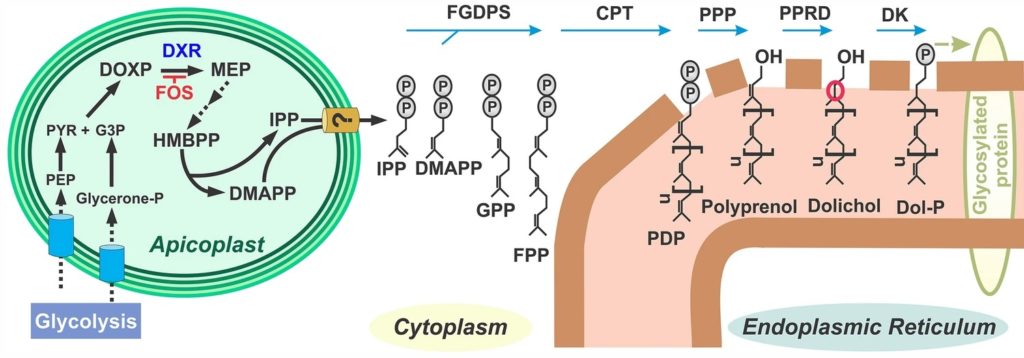Metabolomics profiling reveals new aspects of dolichol biosynthesis in Plasmodium falciparum

The cis-polyisoprenoid lipids namely polyprenols, dolichols and their derivatives are linear polymers of several isoprene units. In eukaryotes, polyprenols and dolichols are synthesized as a mixture of four or more homologues of different length with one or two predominant species with sizes varying among organisms. Interestingly, co-occurrence of polyprenols and dolichols, i.e. detection of a dolichol along with significant levels of its precursor polyprenol, are unusual in eukaryotic cells. Our metabolomics studies revealed that cis-polyisoprenoids are more diverse in the malaria parasite Plasmodium falciparum than previously postulated as we uncovered active de novo biosynthesis and substantial levels of accumulation of polyprenols and dolichols of 15 to 19 isoprene units. A distinctive polyprenol and dolichol profile both within the intraerythrocytic asexual cycle and between asexual and gametocyte stages was observed suggesting that cis-polyisoprenoid biosynthesis changes throughout parasite’s development. Moreover, we confirmed the presence of an active cis-prenyltransferase (PfCPT) and that dolichol biosynthesis occurs via reduction of the polyprenol to dolichol by an active polyprenol reductase (PfPPRD) in the malaria parasite.
Flavia M Zimbres, Ana Lisa Valenciano, Emilio F Merino, Anat Florentin, Nicole R Holderman, Guijuan He, Katarzyna Gawarecka, Karolina Skorupinska-Tudek, Maria L Fernández-Murga, Ewa Swiezewska, Xiaofeng Wang, Vasant Muralidharan, Maria Belen Cassera. Sci Rep. 2020 Aug 6;10(1):13264. doi: 10.1038/s41598-020-70246-0.

